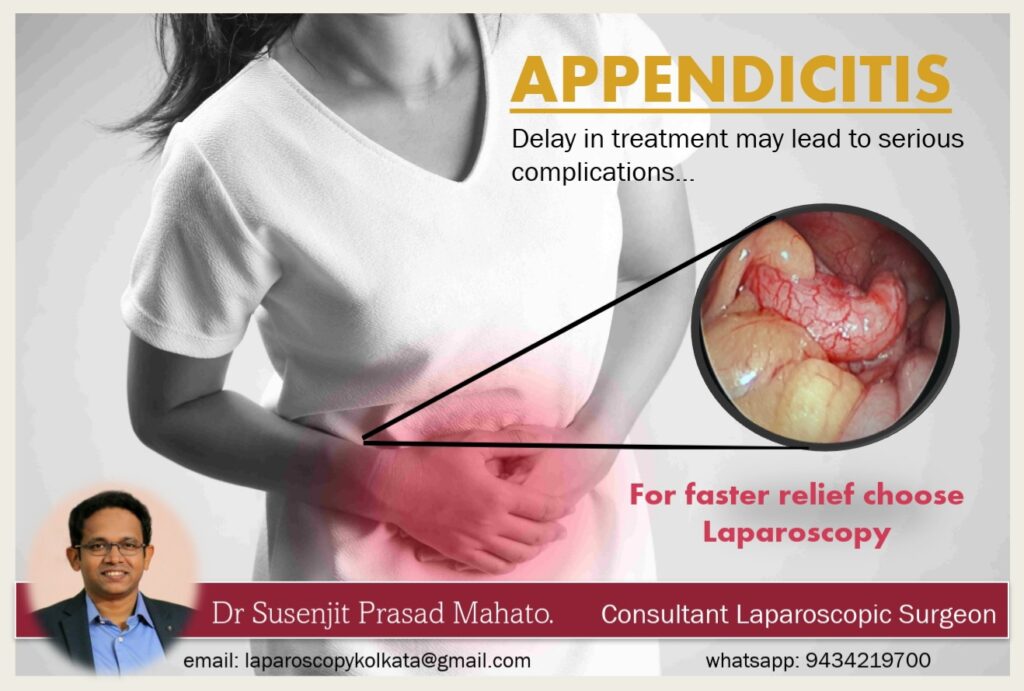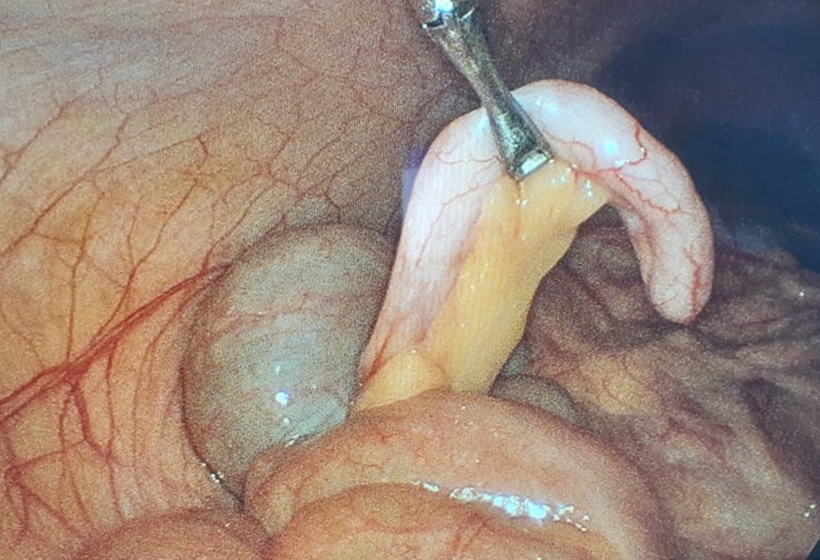Dr. S. P. Mahato
Laparoscopic Appendicectomy in kolkata

Laparoscopic Appendicectomy
Laparoscopic Appendicectomy is the Gold standard for various types of appendicitis . It is a key hole surgery in which small cuts are made and specialised tools are used to remove a diseased or inflamed appendix. It is less invasive and less painful than an open appendicectomy.
Dr. S. P. Mahato is an eminent laparoscopic Appendix Surgeon in Kolkata, specialist for Laparoscopic Appendix Surgery. He has done many difficult and critical appendicitis cases including stump appendicitis, mucocele appendix, appendicular perforation etc.
To book your appointment with him click the below link…
What is Appendix?
The appendix is a small, tube-shaped pouch attached to our large intestine. It is located in the lower right side of our abdomen. The exact purpose of the appendix is yet to known. A review of the relevant available research, published in October 2016 in the journal Clinical & Experimental Immunology, concluded that the appendix is not a rudimentary organ but it is playing an “important part” in intestinal immune system. It may help us to recover from diarrhoea, inflammation and infections of the small and large intestines. These may sound like important functions, but human body can still function properly without an appendix.

What is Appendicitis?
Appendicitis is an inflammation of the appendix. Appendix can rapidly inflamed and swollen and form pus. This buildup of bacteria and pus can cause pain around the umbilicus that spreads to the lower right section of the abdomen. Walking or coughing can make the pain worse. One may also experience nausea, vomiting, and diarrhea.
It is important to seek treatment right away if one having symptoms of appendicitis. When the condition goes untreated, the appendix can burst (perforated appendix) and release bacteria and other harmful substances into the abdominal cavity. This can be life-threatening and will lead to a longer hospital stay. So, i t’s crucial to remove the appendix right away, before the appendix can rupture. Once an appendicectomy is performed, most people recover quickly and without complications.

Symptoms of Appendicitis:
- abdominal pain that starts suddenly near the umbilicus and spreads to the lower right side of the abdomen
- abdominal swelling
- rigid abdominal muscles cramps
- constipation or diarrhea
- nausea and vomiting
- loss of appetite
- low-grade fever
- anorexia
Although pain from appendicitis typically occurs in the lower right side of the abdomen, pregnant women may have pain in the upper right side of the abdomen. This is because the appendix is higher during pregnancy.
Indications of Appendicectomy:
- Acute Appendicitis,
- Recurrent Appendicitis,
- Interval Appendicectomy after drainage of Appendicular Abscess or after resolved Appendicular Mass,
- Carcinoid Tumor at the tip of appendix < 2cm,
- Mucocele of Appendix,
- Appendicular perforation,
- Stump Appendicitis etc.
Laparoscopic Appendicectomy is the standard treatment for almost all appendicular diseases.

How Laparoscopic Appendicectomy was done?
Laparoscopic appendicectomy is a key – hole minimally invasive surgical procedure used to remove a diseased appendix.
Surgeons perform the procedure through 3 small incisions or ports. The umbilical port is used to introduce a camera (laparoscope) to visualize the inside of the abdomen in a screen. Other two ports are used to introduce long and slender surgical instruments to dissected out the appendix from its anatomical attachments like caecum and mesoappendix. Laparoscopic appendicectomy or appendix Surgery is done under general anesthesia, so that patient sleeps throughout the entire procedure and don’t have any pain during the procedure.
Laparoscopic appendicectomy is less invasive than an open appendicectomy. Open appendix removal involves a larger incision and more pain and delayed recovery. Laparoscopy means less pain, less bleeding, less wound and rapid recovery.